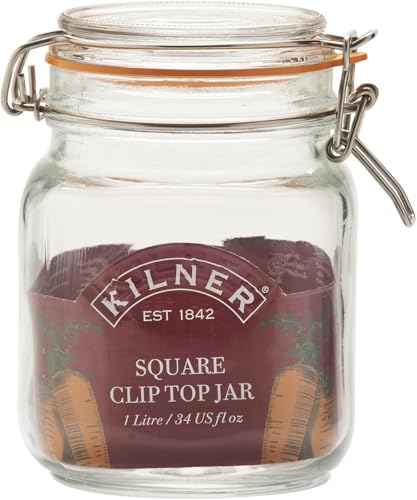Description
Sourdough starter is one of those things that sounds all mysterious and complicated, until you have done it once. And suddenly you wonder why you didn’t try it sooner. After all, it’s just flour and water and the natural yeasts in the air around us and on your flour, which create this delicious tangy base for all kinds of baked goods.You only need to go through this process once. After that, you just feed it 2 days before you want to bake your bread once and it’ll be happy and bubbly.
I’m describing Rye Sourdough Starter here, as that’s what I use most, but you can use the exact same recipe for white sourdough starter. Though rye has an easier time transforming into sourdough, so it’s a great starter for the white one.
Ingredients
- 200 g wholewheat rye flour
- 200 ml filtered water
Instructions
Day 1:
- In a clean glass jar or container, mix 50 grams of whole rye flour and 50 ml of filtered water until they look like thick pancake batter.
- Cover the jar loosely with either a lid or a kitchen towel. You want to let the healthy yeasts in, but keep other stuff out.
- Let the mixture sit at room temperature for a full day.
Day 2:
- Today you might already see the first bubbles. That means it worked.
- Add another 50 grams of whole rye flour and 50 ml of filtered water to the jar and mix all together.
- Cover the jar again and let it sit at room temperature for another day.
Day 3:
- Today you might start noting a slightly sour smell. That’s sourdough forming!
- Discard about half of the starter.
- Add another 50 grams of whole rye flour and 50 ml of filtered water to the jar and mix yet again. Leave it until the next day.
Day 4 and after:
- Repeat the discarding and feeding process as in Day 3: discarding about half of the starter and adding 50 grams of whole rye flour and 50 ml of filtered water each day, mix, let it stand until the next day.
- Repeat this daily feeding routine for about a week or until your sourdough starter becomes active, bubbly, and has a pleasant sour smell. This can range from overripe bananas to having a slight nail polish remover hint. All of that is fine, as long as it bubbles.
- That’s it! You now have a homemade rye sourdough starter that you can use to make delicious rye sourdough bread and other baked goods. Enjoy the process of nurturing and using your sourdough starter!
Maintenance:
- Note below is the standard advised process of sourdough starter maintenance. As I wrote above, I found I don’t necessarily need to feed it every week, as it lasts just fine without. But if you bake regularly, the below is a good schedule.
- Once your rye sourdough starter is active, you can transition to maintaining it at a smaller scale to avoid wastage.
- Discard all but 50 grams of the starter and feed it with 50 grams of whole rye flour and 50 ml of filtered water daily.
- You can also store the starter in the refrigerator and feed it once a week by discarding all but 50 grams and feeding it with 50 grams of whole rye flour and 50 ml of filtered water.
- Before using the starter in a recipe, make sure to refresh it by discarding all but 50 grams and feeding it with 50 grams of whole rye flour and 50 ml of filtered water. Allow it to sit at room temperature for a few hours until it becomes active.
Equipment
 Buy Now →
Buy Now → Notes
Note: I’m using g and ml here, as they make the 1:1 ration clearer than if I’d go with cups, as it would look unnecessarily complicated. Basically, you use flour and water in a ration of 1:1 in weight whenever you feed your sourdough starter.
Another note: I know I found the basic recipe somewhere, then scribbled it down and altered it over time. I just can not remember where. So, if you are the author of the original, please feel free to comment and I happily give you credit. Your recipe has served me very well over the years.
Once you’ve created the first portion, you will have a better idea about the consistency described and can just go by feel alone, to reach the desired consistency. Just make sure for the first week, you double the amount of starter and by day 3 discard half, so you don’t have to use as much flour.
- Prep Time: 10 minutes
- Fermentation: 4 days
- Category: Ingredient
- Method: Stir
- Cuisine: French
Nutrition
- Calories: 289
